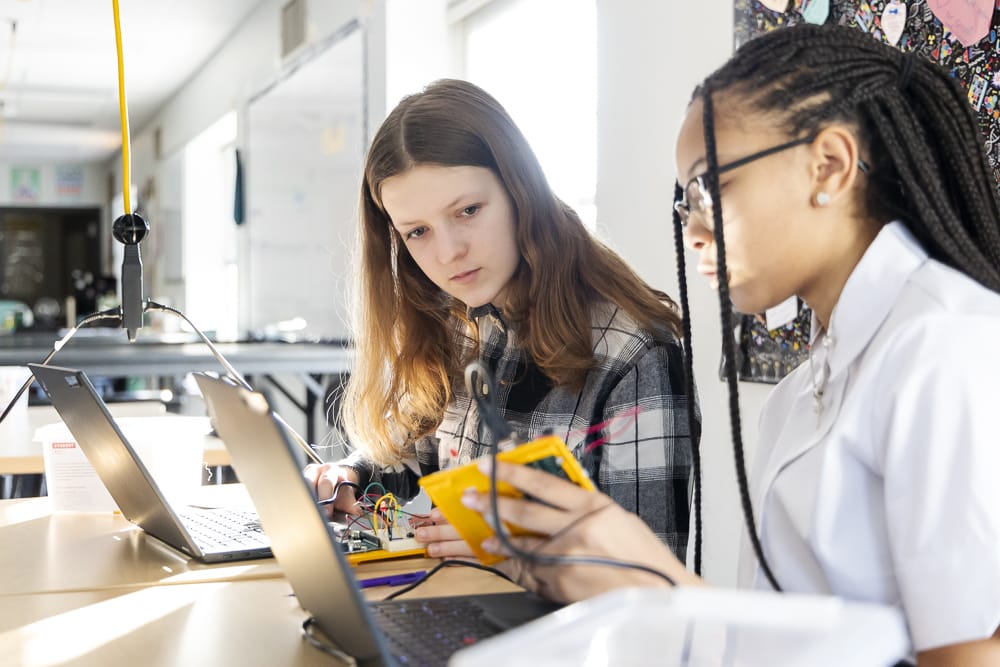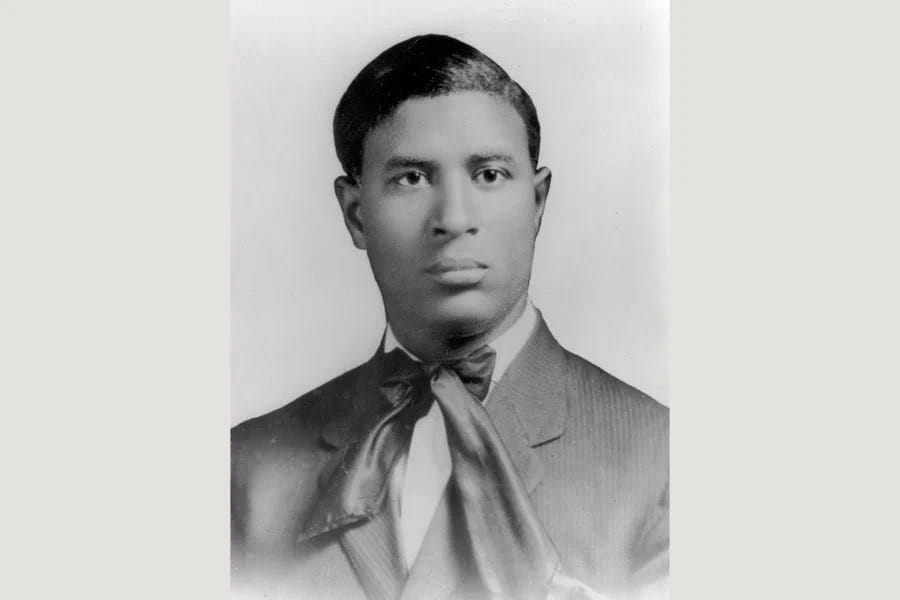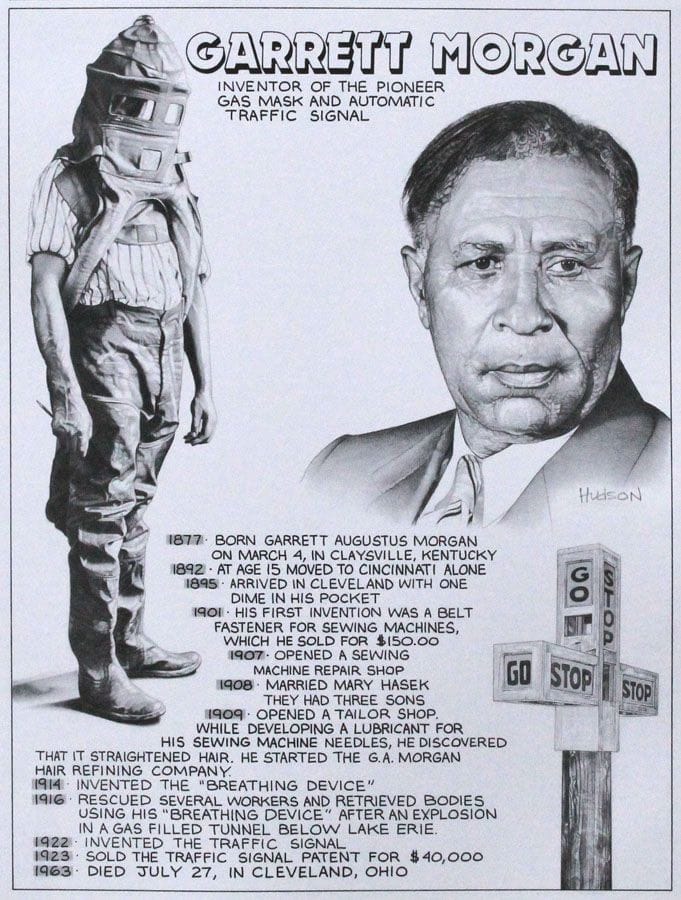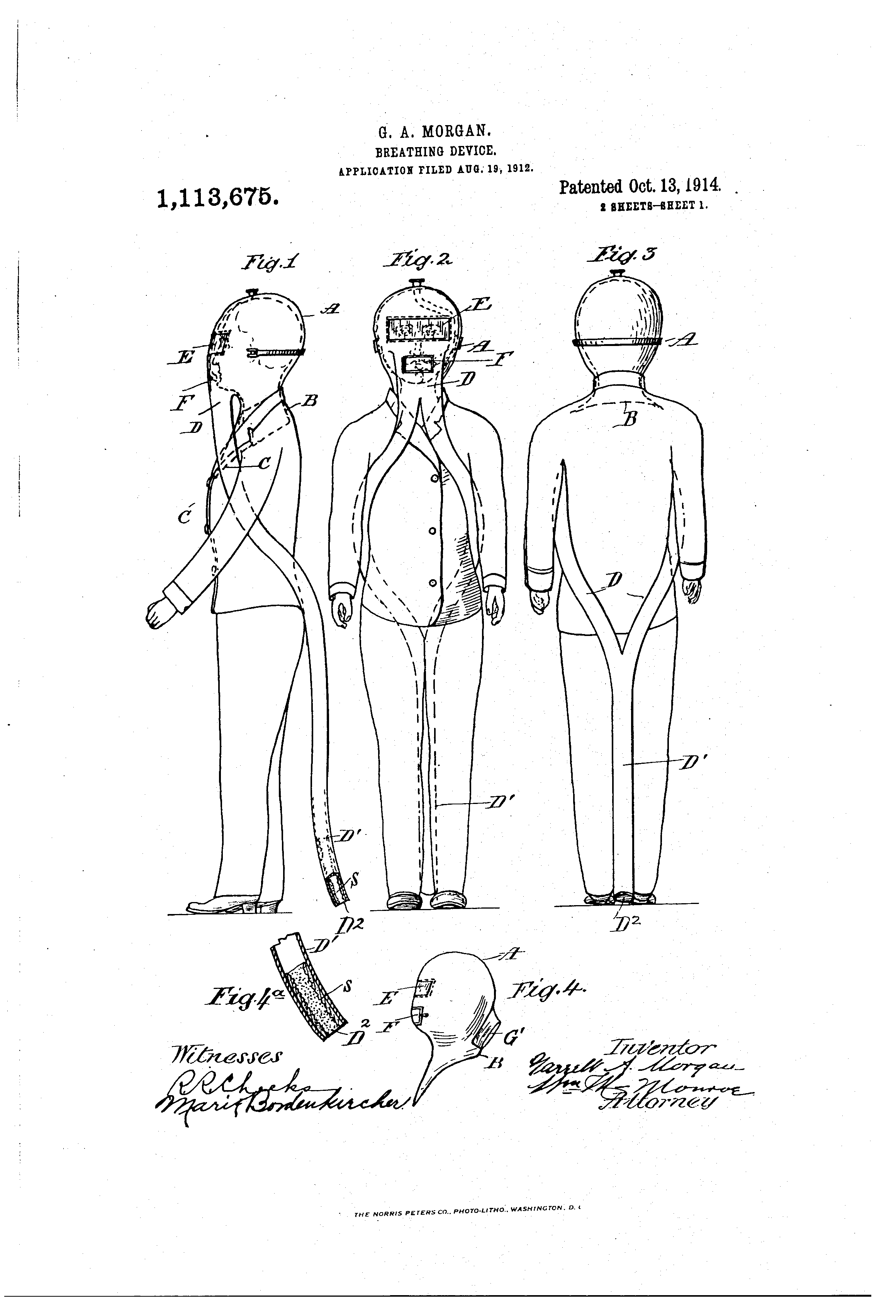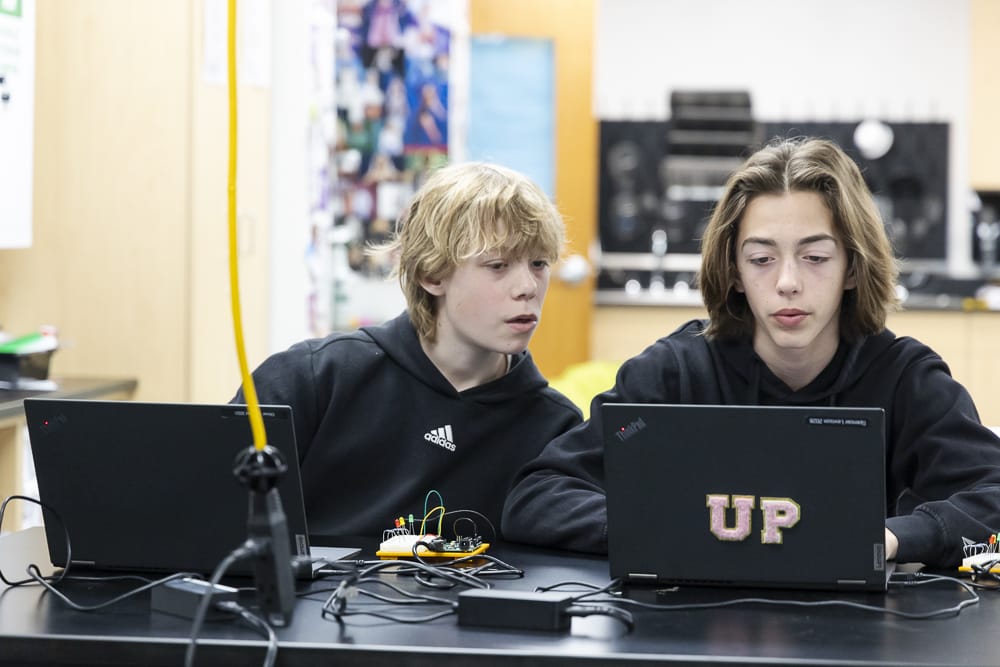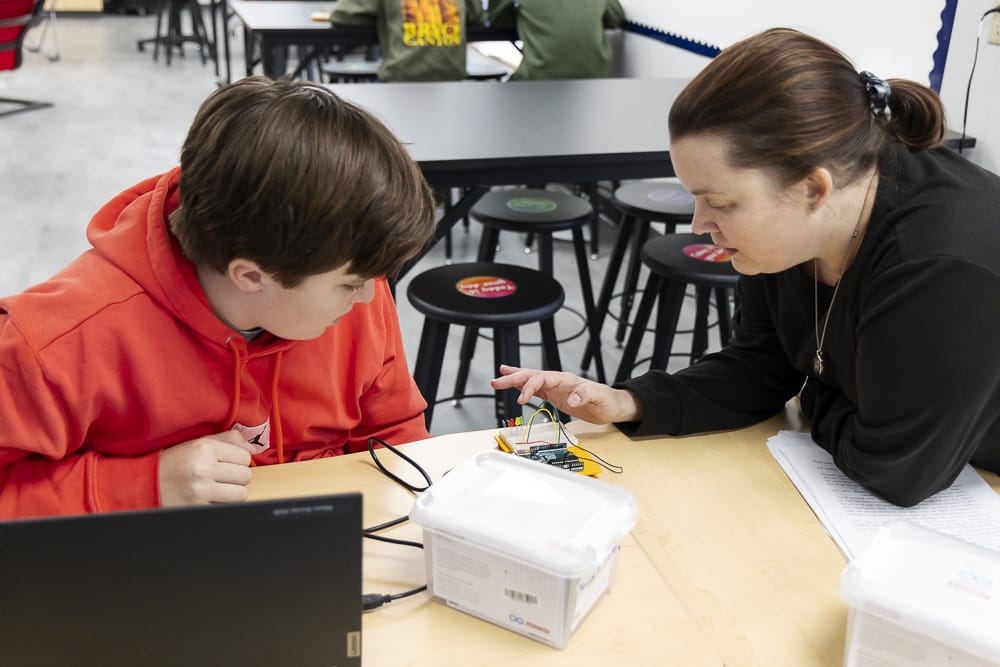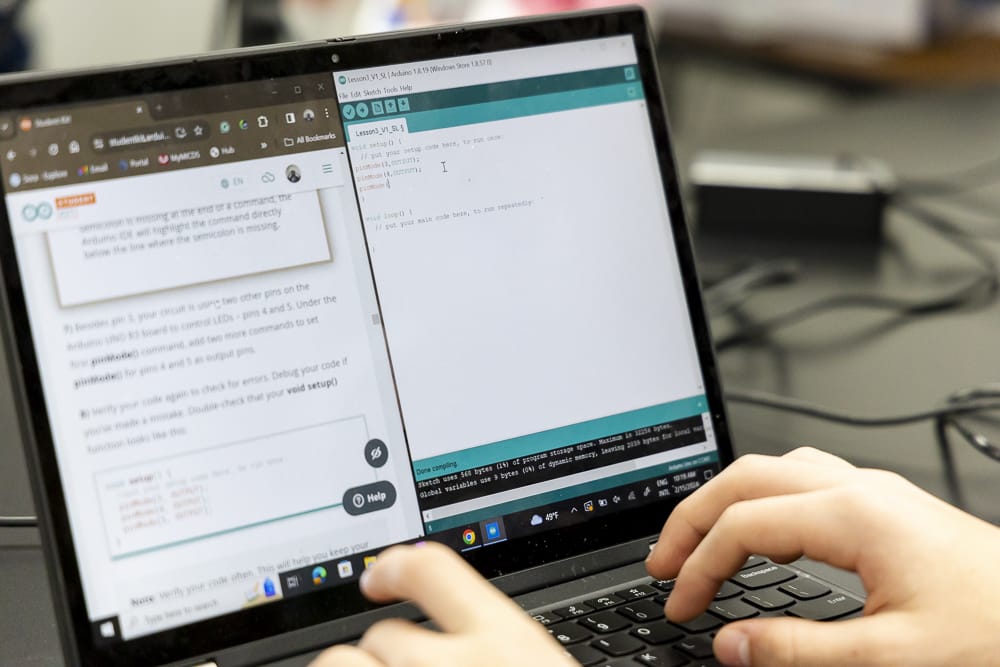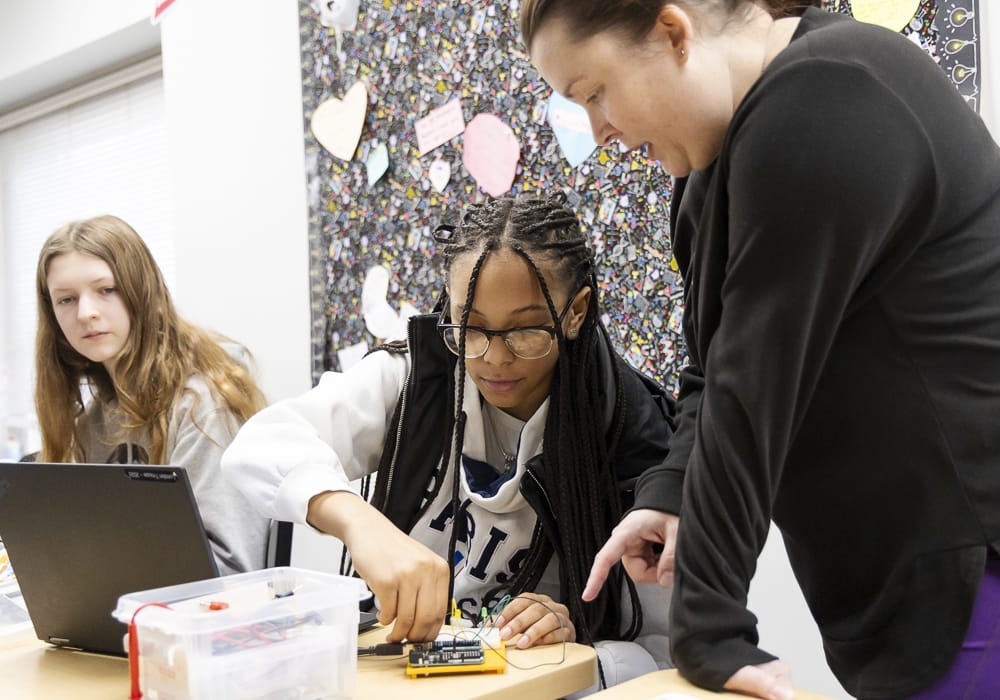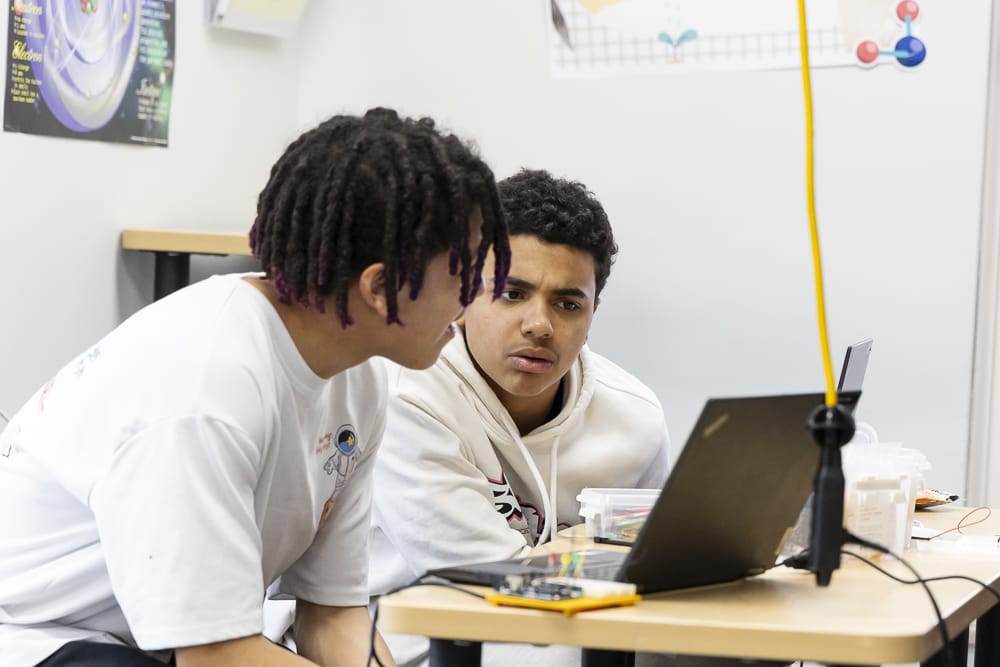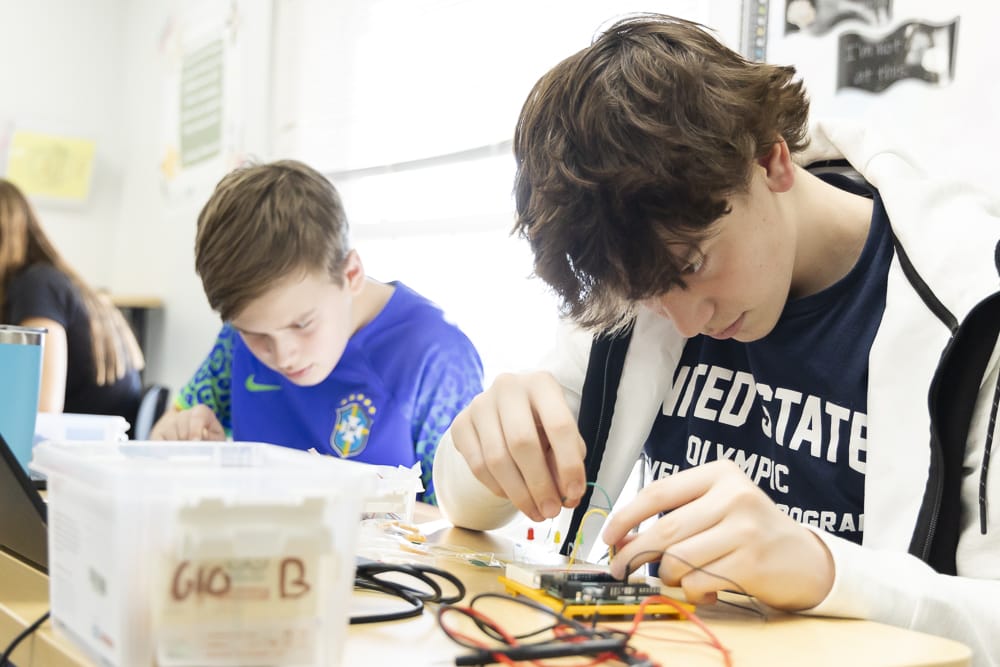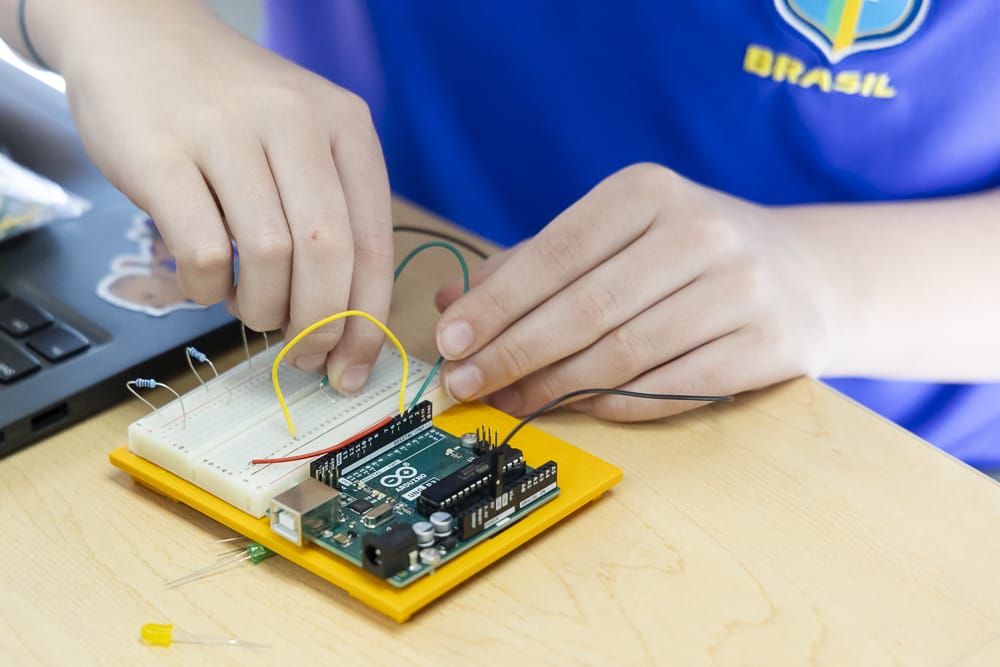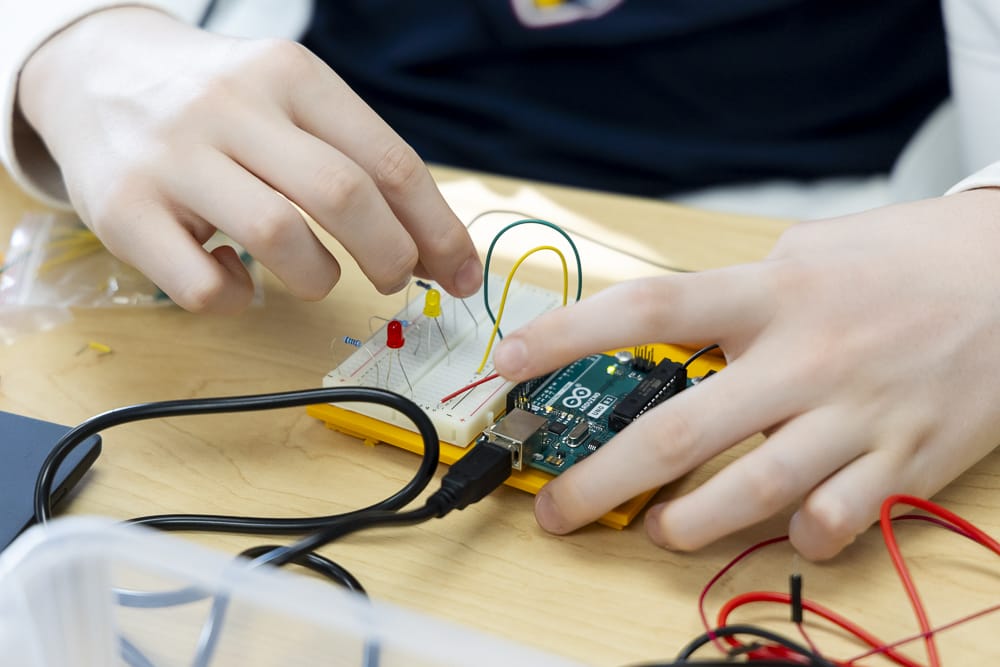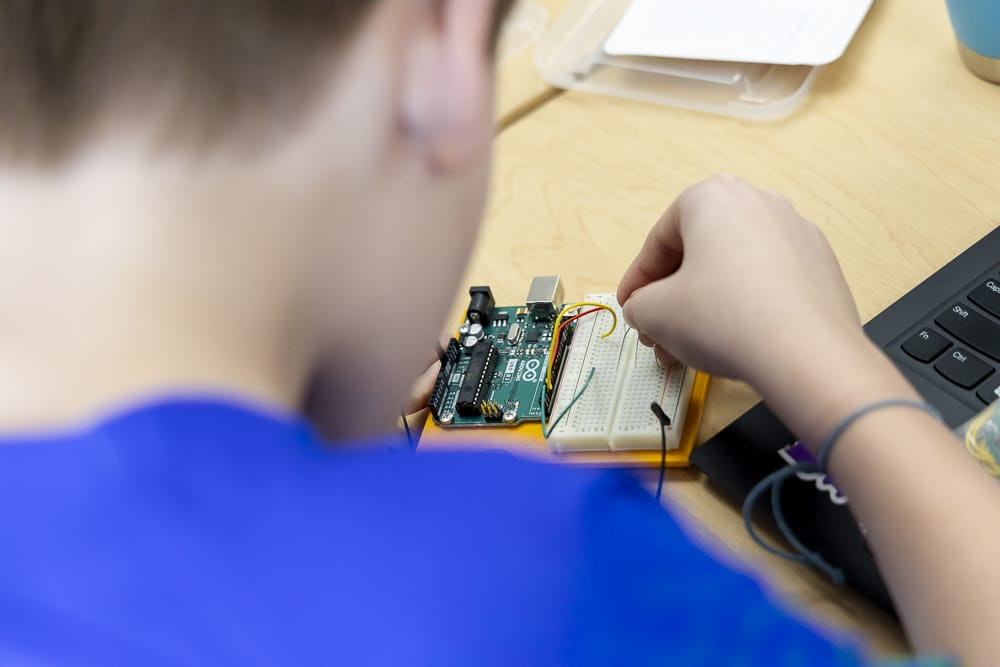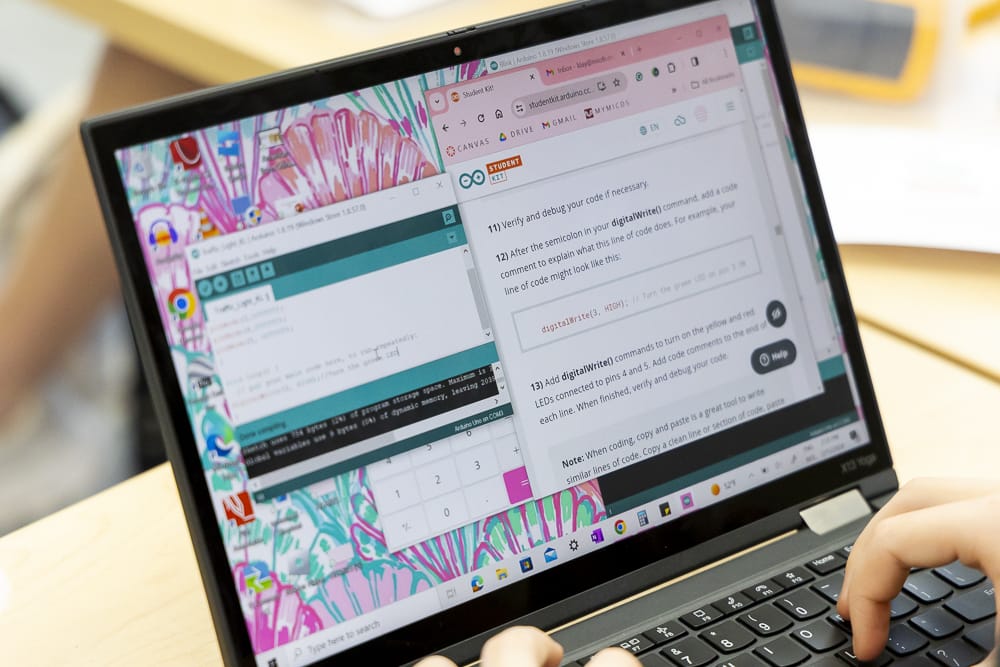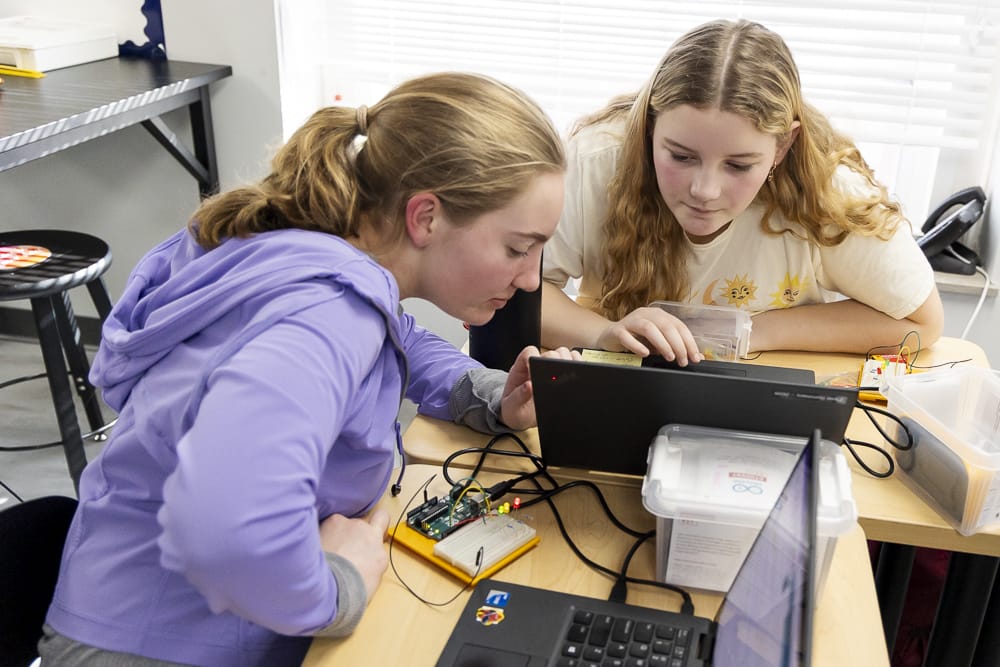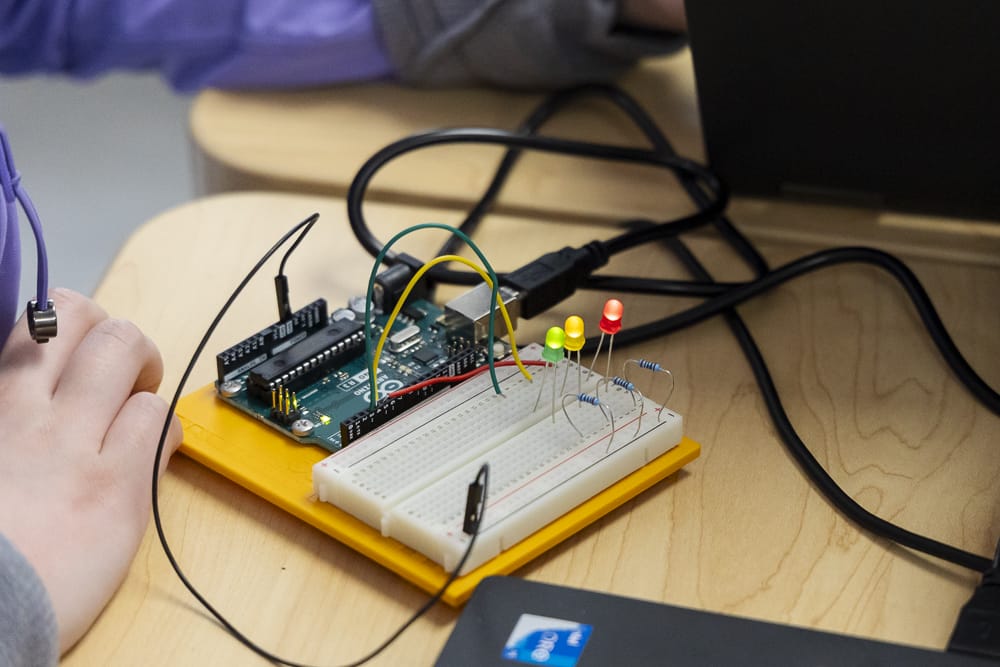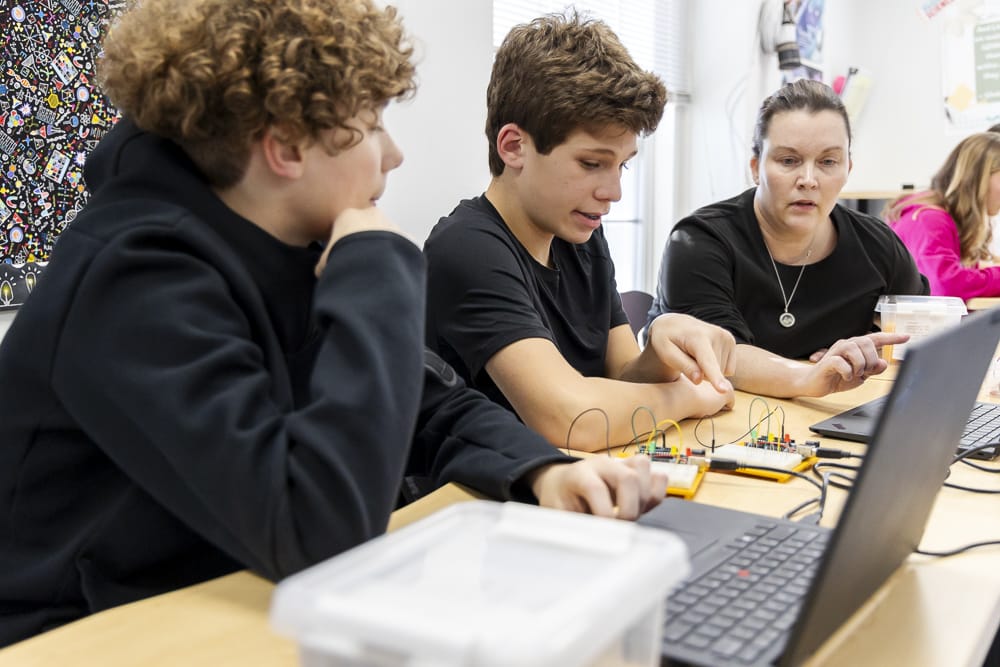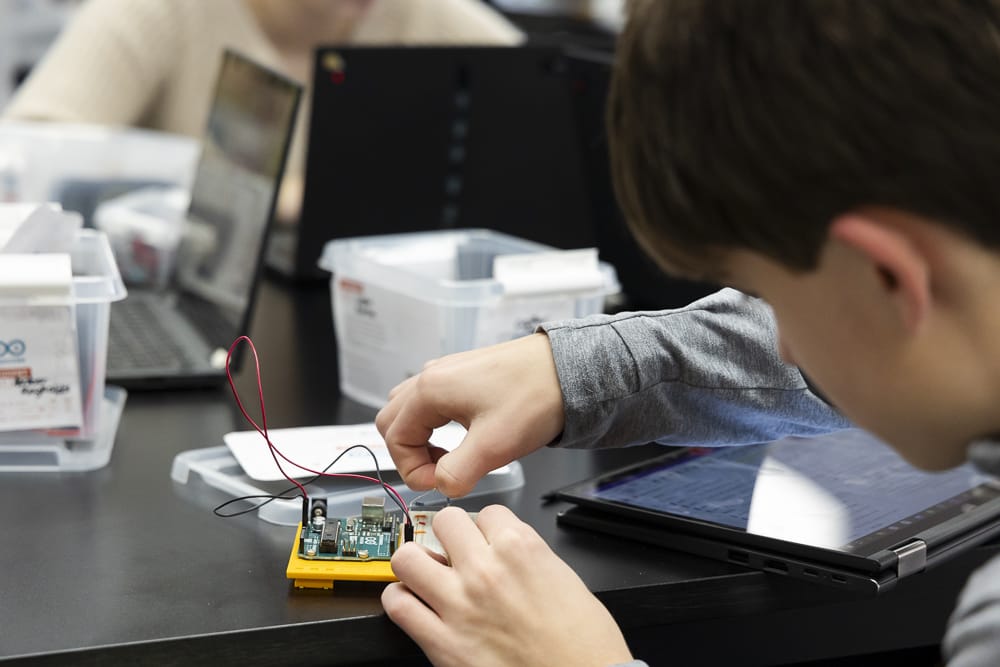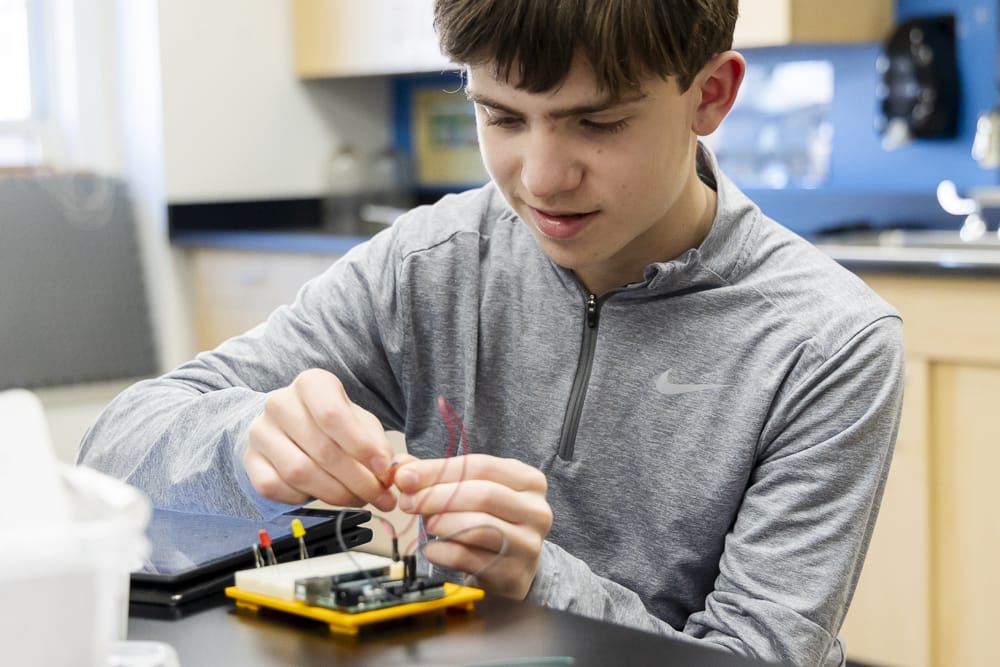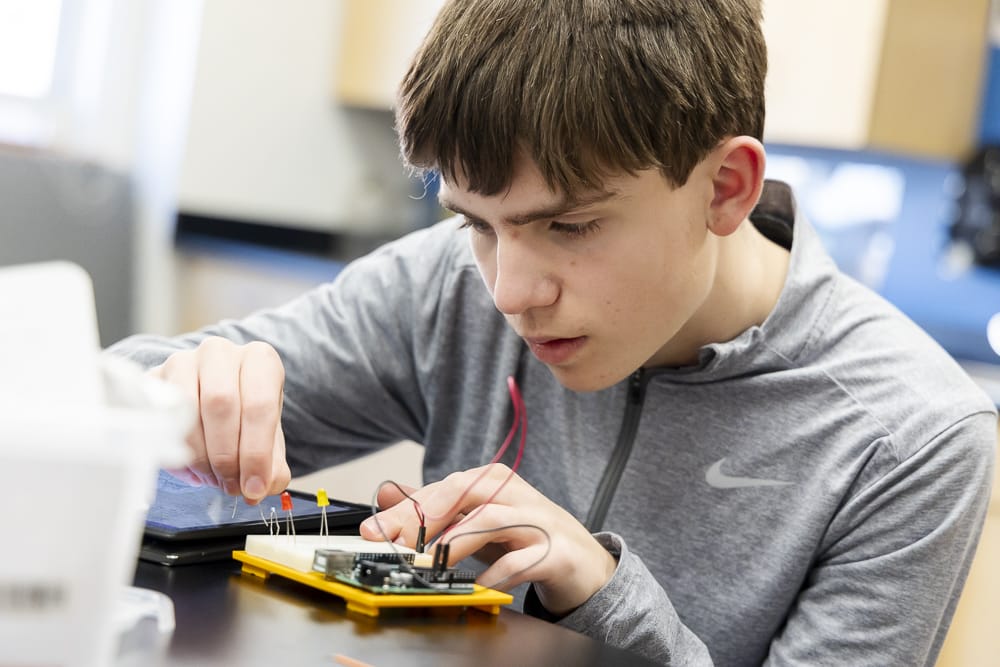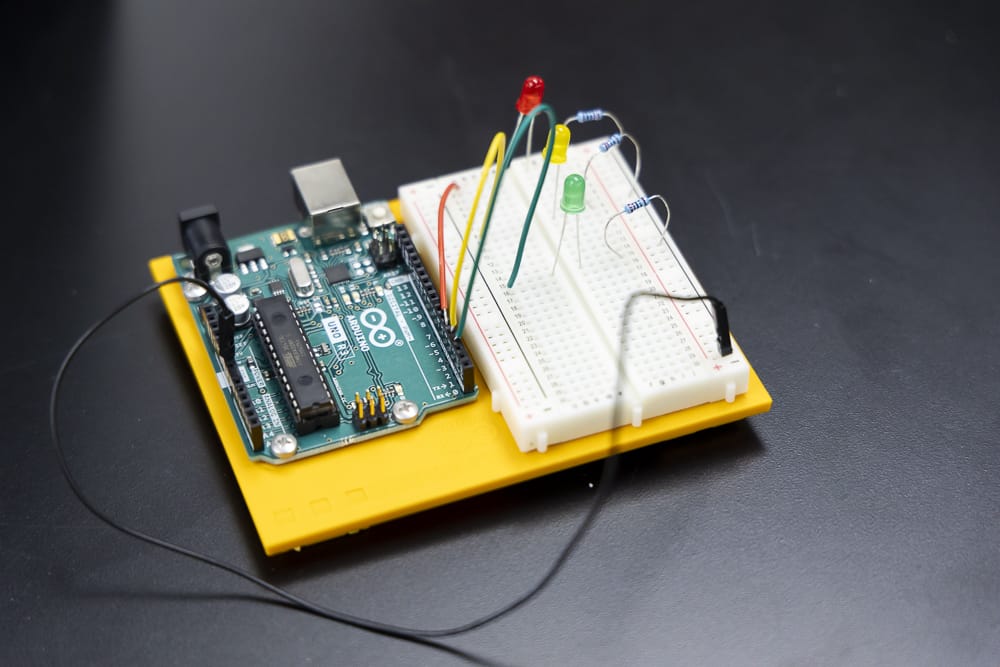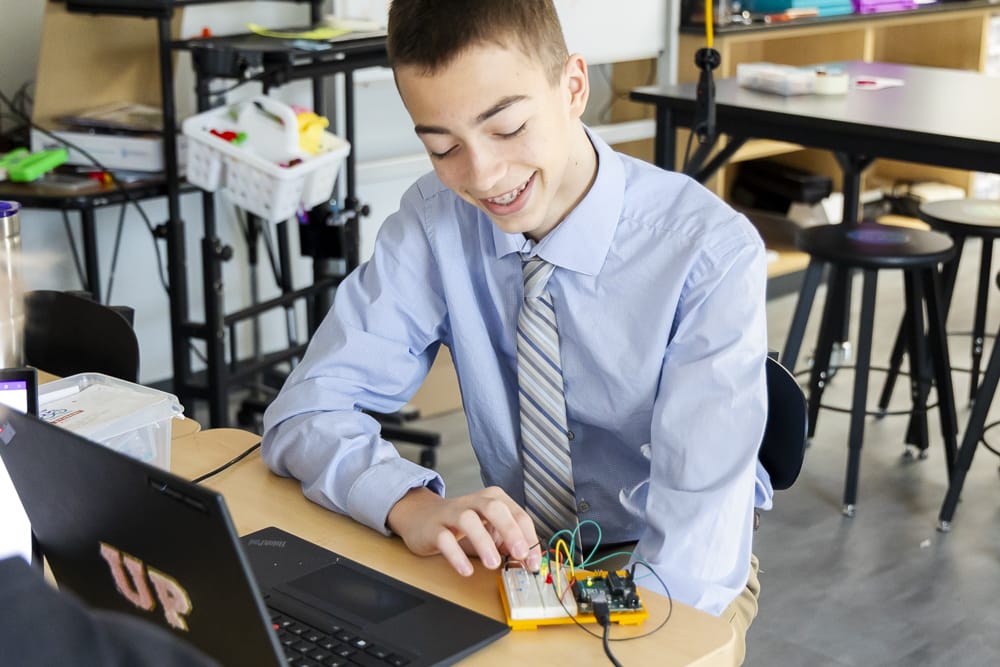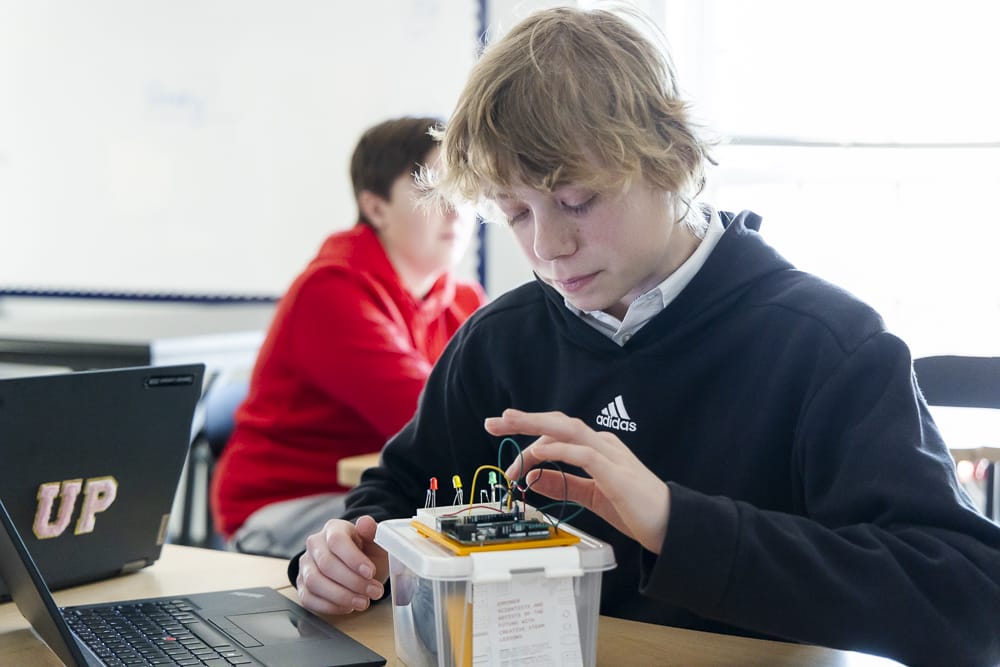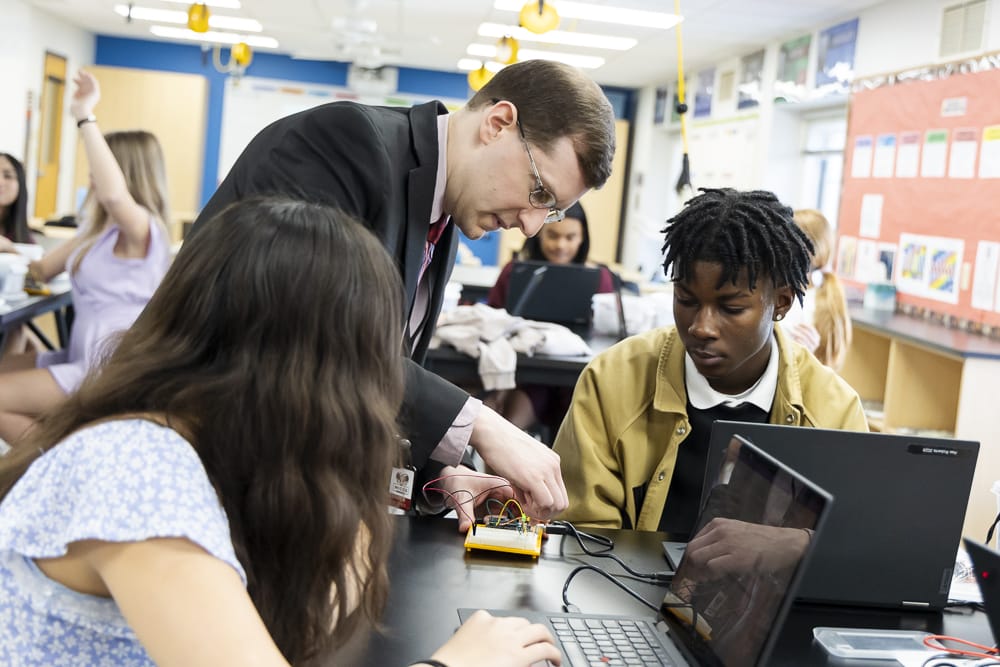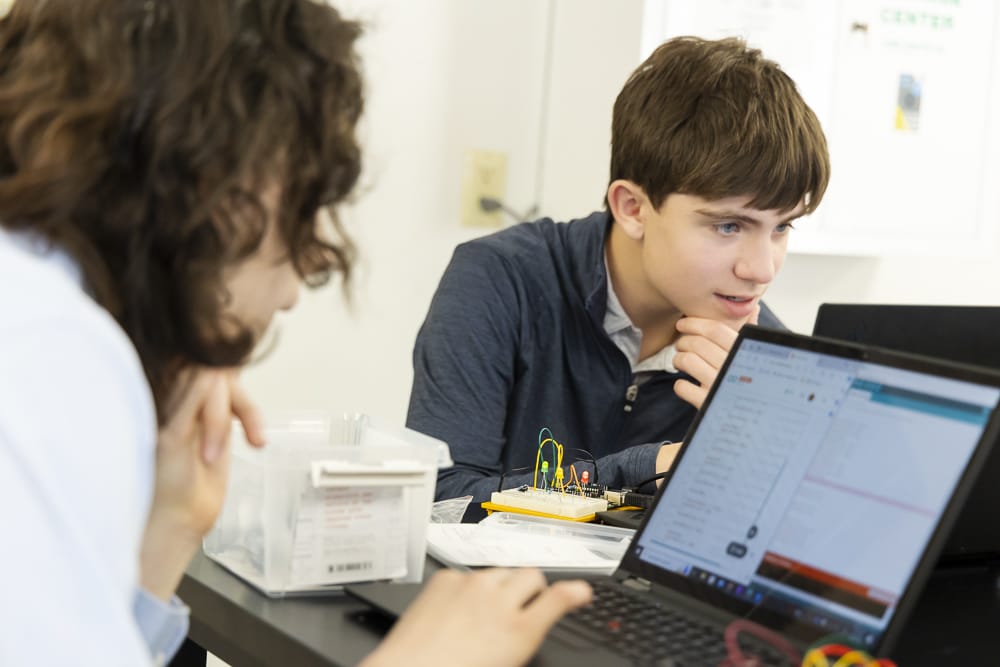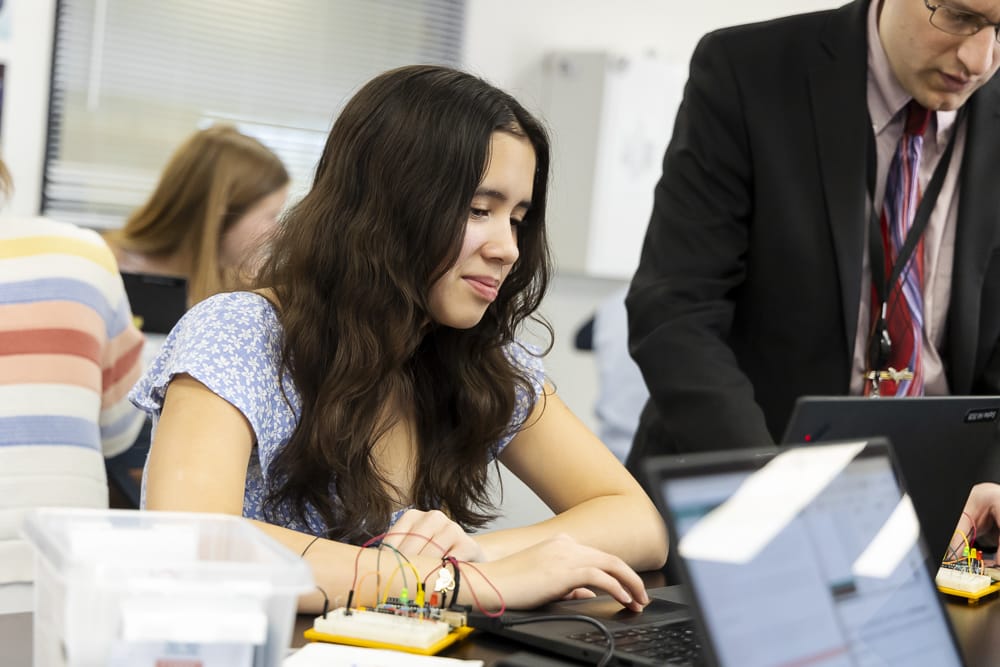Inventions do more than make the functions in your life easier. They can also serve the larger community, helping groups communicate and work together for a more functional society. Eighth graders in the science classrooms of William Bander and Michelle Hrastich recently explored the roots and function of an everyday tool: the traffic light. Using Arduino LED circuits and microcontrollers, they built, coded, and tested their own traffic lights. But first, they learned who invented them and why.
Garrett Morgan was a prolific African-American inventor who described himself as the « Black Edison. » He started his career as a sewing machine mechanic before patenting an improved sewing machine design. After witnessing a carriage and car accident in Cleveland, he was prompted to create an early version of the traffic light, and he even built a breathing device that later provided the blueprint for WWI gas masks, among other inventions. In 1923, he innovated the traffic signal and swiftly patented his invention in the U.S., Britain, and Canada, later selling the rights to General Electric for $40,000. His pioneering work laid the groundwork for subsequent advancements, inspiring modern inventors and engineers. In 2005, he was honored with induction into the National Inventors Hall of Fame, and his original traffic signal prototype is on exhibit at the African American Museum in Cleveland, near the Garrett Morgan School of Engineering and Innovation.
Bander said, « I included Garrett Morgan in this science lesson, as it would otherwise just be another lesson on electricity. I wanted students to appreciate the gift of education. Garrett Morgan lived during a time when Black men went into the workforce with little education, yet he used his hard-earned money to pay for a tutor to continue his education beyond the classroom. I also wanted to encourage students to innovate because innovative ideas can come from anywhere or anyone, regardless of their background. Garrett Morgan not only improved on existing devices, like the traffic signal, but also created new inventions, like the gas mask. »
Students set out to create their own traffic lights at the intersection of civil engineering and the physics of electricity. They learned that lights and LEDs are often used as visual indicators to communicate a machine’s status. Vehicles have lights that communicate low fuel, low oil pressure, a weak battery, and other engine problems. And just like traffic lights that communicate when it is safe to cross an intersection, each requires precise control of the flow of electricity in a circuit. This control is often carried out by a computer program that tells the lights when to turn on or off.
Students used their microcontrollers on Arduino UNO R3 boards to explore inputs and outputs to perform a task and constructed an LED circuit before coding programs to control the LEDs. They tested and adjusted the coding to make the lights blink in a way that mimics the timing of a traffic light and even used a button to override the program to allow for pedestrian crossing. Once that was complete, they used multimeters to take electrical measurements of the circuit. Kethan Doshi ’28 shared, « We used the Arduino to explore the physics of electricity, making the class more enjoyable! »
Joseph Glasser ’28 enjoyed figuring out how traffic lights work and the mechanics behind them. « I found the constant problem-solving and adjustments I had to make with the code challenging. This lesson expanded my knowledge by showing me that even as simple as blinking lights look, on the inside, it is a mechanical masterpiece that took someone months or years to perfect. If people of society knew how challenging it would be to make something this simple, people would have much more appreciation of the things they use every day and not take them for granted, » he said.
« One of the things I enjoyed the most was learning how traffic lights work and how much it helped me to prepare for upcoming quizzes, » said Amber Reynolds ’28. « The most challenging thing was coding them to flash in 15 intervals, something that is necessary for safety when driving on the roads. The traffic light lesson expanded my knowledge of Garrett Morgan, who invented the traffic light after witnessing a horrible car accident. In creating this innovation, he made the world a safer place, and car accidents are less likely to happen because of it. »
Rylee Day ’28 reconnected with her younger self in the science room. « Something I enjoyed about this project is that I got to bring my childhood toys to life. When I was younger, I would get play sets that included coding and building circuits…and now I get to do it with the real materials in my science class. Something that is challenging about the coding is that it’s a lot of information to take in and build as an actual circuit with the wires and resistors. Since it’s school materials, you’re not allowed to bring it home or work on it for homework, so you have to finish it during class, » she said. « Because of this lesson, I learned the history of who created and invented the traffic light (Garrett Morgan), an African-American inventor, so it was right on time for Black History Month. Working with the circuit lessons, in general, helped me think of ways this connects to my everyday life, like room lights and light switches, how computers work, and how cords and wires work (like computer chargers). Without this lesson, I wouldn’t know how the things I use every day are built and created. »
Day added, « I thought these circuit lessons were really cool to learn. When reviewing with my parents, they told me how they worked on this kind of stuff when they were in high school or college, and it was really fun to talk with them about how different things in our house connected with my science lessons. »
Bander ultimately wanted students to see how science can serve the greater community. He said, « Garrett Morgan’s inventions saved lives and continue to make our lives safer to this day. It was this drive to community service that made his legacy worth learning about. »
